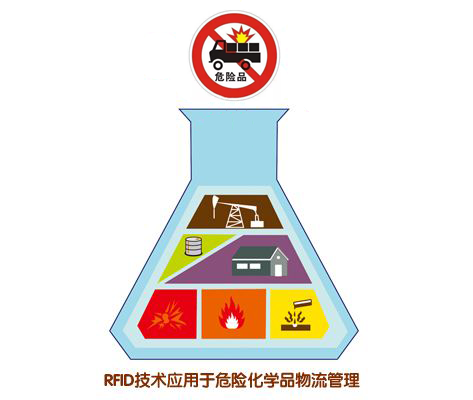
RFID technology conducts all-round management and control of hazardous chemicals
[ad_1]
Under the wave of rapid industrial development, the rapid production and processing has led to the continuous increase in the use and storage of some hazardous chemicals. Because there are many types of hazardous chemicals, the methods of use and storage are different, and they are also flammable, explosive, corrosive, and toxic, making it very difficult to control hazardous chemicals, especially for storage logistics. The storage environment is very demanding. The storage management of hazardous chemicals and the excessively rapid industrial development have caused traditional chemical storage management requirements to no longer meet the current development needs. RFID technology improves the intelligent level of hazardous chemical storage management, reduces the safety of storage and transportation, and establishes informatization and intelligent management and control.
There are many shortcomings in the traditional hazardous chemicals management platform. Because the identification of the outer packaging of the goods is easy to damage, the traditional identification of hazardous chemicals mostly uses aluminum nameplates or bar codes. These identifications cannot store a lot of information, and are easy to wear, resulting in failure to identify later. It is difficult to achieve comprehensive supervision. Generally, the management of hazardous chemicals is concentrated in the warehousing and transportation links, and there is a lack of effective management of the production and after-use processing of hazardous chemicals. Due to personnel negligence in the storage of hazardous chemicals, the accounts did not match the actual products. The RFID electronic tag has a large storage capacity and can record up to kilobytes of data. The existing RFID electronic tag packaging technology can realize the tag is torn and destroyed, avoiding the possibility of unauthorized tampering with the electronic tag information.

RFID hazardous chemicals warehouse management process:
Goods location management: Install an RFID electronic tag on each dangerous chemical product. The RFID electronic tag records the performance and characteristics of the dangerous product, such as storage location, production date, manufacturer, name, risk, storage method, Use safety matters, transportation safety matters and other information. Then transfer this information to the company’s management database, so that the company can quickly understand the distribution status of chemicals in the warehouse, storage time and other information.
Inbound and outbound operations: Automatically scan information collection on RFID electronic tags through RFID handheld terminals, efficiently handle warehouse in and out operations, understand the status of chemicals in and out of warehouses, and implement real-time updates of warehouse data. It can clearly reflect the proportion of various chemicals in sales in the database, and at the same time, it can avoid the time wastage caused by man-made reasons and the illegal use of dangerous goods by others.Ensure the safety of safety products
Inventory: Scanning the RFID electronic tags and material RFID electronic tags of the cargo location through the RFID handheld terminal, and real-time query of the material inventory. In the system, random inspections can be divided into warehouses, regions, and cargo locations, and can also be spot-checked for specific categories. Perform a comprehensive inventory of the entire system on a regular basis and generate a difference table to facilitate the analysis and tracking of which materials belong to the materials with low inventory accuracy. At the same time, it dynamically analyzes some materials that have not been used for a long time and issues cautions.
Quality traceability: Through the safety traceability system, you can learn about the production time, manufacturer, and expiration date of hazardous chemicals. In the course of use, once it is found that the chemical does not meet the safety standards, it is necessary to take effective measures in time to report the situation to the manufacturer in a timely manner. Avoid causing greater safety accidents.
Query, statistics, and reports: including management reports such as customer shipment statistics, product tracking, channeling management, serial number query, inventory dynamic query/detailed list, query, statistics, and report generation of various documents.Form textual content. Convenient for review
The explosive, flammable, toxic, corrosive, and radioactive nature of hazardous chemicals leads to effective maintenance in the process of production, operation, storage, transportation, use, and disposal. Through the unified collection and management of dangerous goods information through RFID technology, efficient management and control of dangerous goods can be realized. RFID automatic information collection of the characteristics of each dangerous chemical product can quickly understand the status of chemicals through the management of chemical information , Timely inspection, RFID hazardous chemicals warehouse management can greatly improve the efficiency of hazardous chemicals management, make hazardous chemicals management more scientific, reduce management blind spots in hazardous materials logistics, and ensure the safety and quality of hazardous materials. The use of advanced information technology to enhance the means and tools of the supervision of hazardous chemicals throughout the life cycle has become a major trend in promoting the healthy development of the hazardous chemicals industry.
[ad_2]


